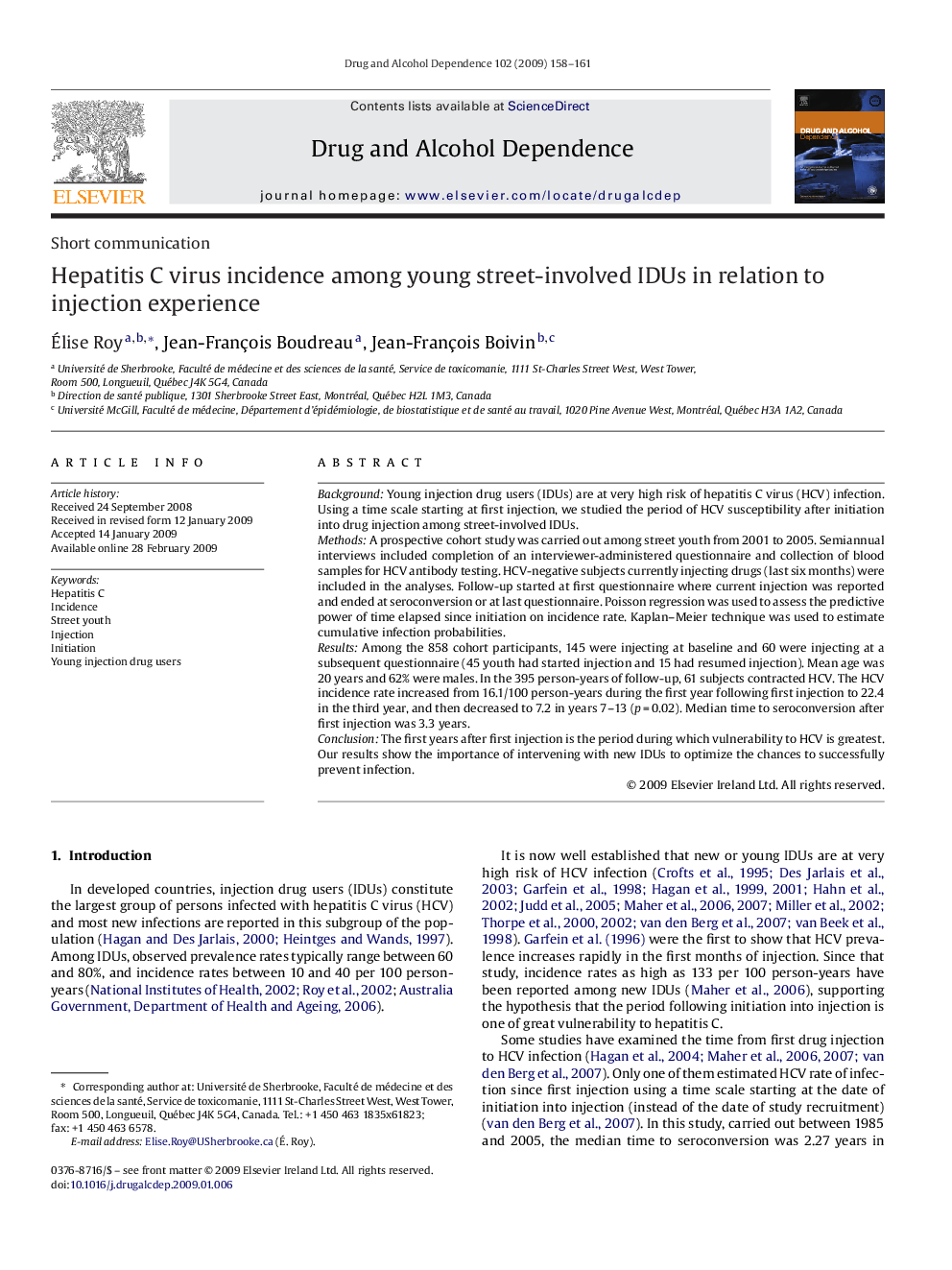| Article ID | Journal | Published Year | Pages | File Type |
|---|---|---|---|---|
| 1070834 | Drug and Alcohol Dependence | 2009 | 4 Pages |
BackgroundYoung injection drug users (IDUs) are at very high risk of hepatitis C virus (HCV) infection. Using a time scale starting at first injection, we studied the period of HCV susceptibility after initiation into drug injection among street-involved IDUs.MethodsA prospective cohort study was carried out among street youth from 2001 to 2005. Semiannual interviews included completion of an interviewer-administered questionnaire and collection of blood samples for HCV antibody testing. HCV-negative subjects currently injecting drugs (last six months) were included in the analyses. Follow-up started at first questionnaire where current injection was reported and ended at seroconversion or at last questionnaire. Poisson regression was used to assess the predictive power of time elapsed since initiation on incidence rate. Kaplan–Meier technique was used to estimate cumulative infection probabilities.ResultsAmong the 858 cohort participants, 145 were injecting at baseline and 60 were injecting at a subsequent questionnaire (45 youth had started injection and 15 had resumed injection). Mean age was 20 years and 62% were males. In the 395 person-years of follow-up, 61 subjects contracted HCV. The HCV incidence rate increased from 16.1/100 person-years during the first year following first injection to 22.4 in the third year, and then decreased to 7.2 in years 7–13 (p = 0.02). Median time to seroconversion after first injection was 3.3 years.ConclusionThe first years after first injection is the period during which vulnerability to HCV is greatest. Our results show the importance of intervening with new IDUs to optimize the chances to successfully prevent infection.
